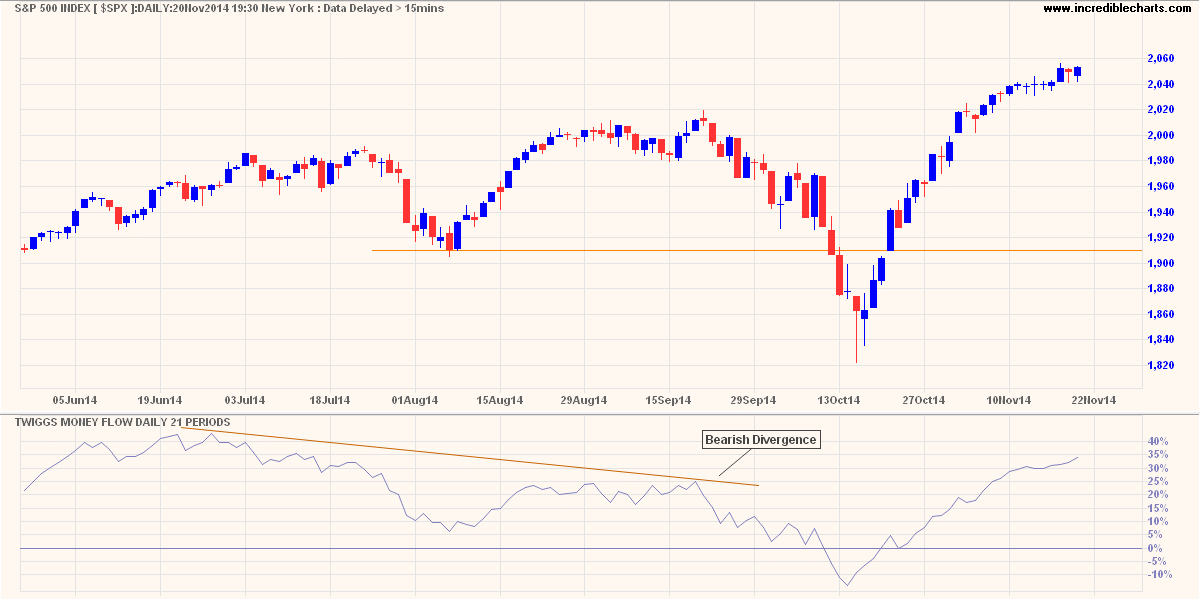The Basics Of Money Flow
Post on: 9 Апрель, 2016 No Comment

The Basics Of Money Flow
The Basics Of Money Flow
August 03 2012| Filed Under » Chaikin Money Flow Index , MFI , Momentum Trading , RSI , Technical Analysis , Technical Indicators
A wise focus of any student of technical analysis is to study indicators that allow the investor to make sharper entry and exit points in his or her trading program. This article will take a closer look at money flow. Marc Chaikin developed money flow, which uses both price and volume to record a more complete picture of the price action of a particular issue.
What Is Money Flow?
Software provider Tradestation 7 describes money flow in the following way: [Money flow is] an indicator that calculates an indexed value based on price and volume for the number of bars specified in the input Length. Calculations are made for each bar with an average price greater than the previous bar and for each bar with an average price less than the previous bar. These values are then indexed to calculate and plot the money flow. The use of both price and volume provides a different perspective from price or volume alone. The money flow indicator tends to show dramatic oscillations and can be useful in identifying overbought and oversold conditions.
Let’s break this down into a language that we can all understand. The first thing is to explain accumulation/distribution. which is the momentum indicator that determines money flow. Chaikin understood that if a stock closed above its midpoint for a given session, the stock exhibited accumulation that day. Conversely, distribution is the order of the day if the stock closed below its midpoint.
For the mathematician in you, the calculation for the midpoint of an issue is simply the highest trade of the day added to the lowest trade of the day, divided by two. Chaikin then uses price and volume together to finish the calculation. Using a 21-day trading period, he adds the accumulation/distribution number for 21 days and then divides this number by the sum of the volume for the same 21-day period.
[You must be registered and logged in to see this image.]
Chart created with Tradestation
Using Money Flow
Tradestation 7 sets up the money flow indicator a little differently than some of the other software makers on the market, so on your computer you may see something different from what is shown in the chart above.
In the chart of Ross Stores (Nasdaq: ROST ), money flow is measured in a 14-day period. The display is formatted so it better shows the overbought and oversold situations of this issue. Novice traders as well as veterans may want to play around with time periods to get a better look from time to time. It can’t hurt and sometimes it may just pay off. There is nothing wrong with using a shorter period and being a little aggressive now and again.
In the chart, we are using 80/20 format to show the overbought (80) positions and the oversold (20) positions. You will sometimes see a format of 70/30.
Represented by the first shaded area occurring on or about the third week of October 2002, the money flow moved above the 80 line and thus became overbought: as you can see in the price action portion of the chart, Ross Stores peaked out at $45.50 before falling off to the $41.75 level in just a few trading days. The second overbought position in this chart occurs on Jan. 3, 2003, and at that time the stock rose to the $48.00 level and then over a period of six weeks dropped to a level of about $33. Then, at this $33 level or so, an oversold reading is indicated by another shaded area.
If we read a little further into this chart of Ross Stores, the period from the oversold position of late February to the end of the time period of this chart is very interesting. If the investor had used money flow as the only indicator to determine entry and exit points and therefore bought Ross at the last oversold point, he or she, at the end of July, would be looking at a paper profit of at least 30%. The indicator has not pushed through the 80 level and for the most part has hovered around the mid-range of 40 to 60 on our chart. You can also see a pattern of higher highs and higher lows in the four-month uptrend.
A Few Cautions
It is important you take into account other indicators that will support your entry and exit points, and note that spiky tops often indicate that money flow is about to top out. Furthermore, gaps in price action may present another problem you should be aware of: we determine the money flow by calculating the midpoint of price action, but, if large gaps occur, then the midpoint is missing and the money flow numbers are skewed.
The Bottom Line
This is a simple look at what can be a more complicated indicator. Although money flow can be excellent for identifying overbought and oversold positions, its dependency on accumulation/distribution may distort its numbers if the midpoint is missing. Remember always to use the signals of other indicators to verify your entry and exit points.
Last edited by Cals on Sat 31 Aug 2013, 01:42; edited 1 time in total
_________________














